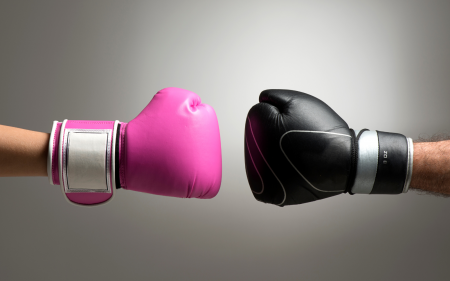With his squeaky voice Charles Martinet is instantly recognisable as that lovable Italian plumber Mario. But he looks nothing like the character he’s been voicing since 1990 in the eternally popular eponymous video game, Mario.
With a thick head of white hair Martinet has an impish smile that seems to come through in his voice when he chimes that famous line: “It’s-a me, Mario!”.
Affable and still seemingly somewhat bemused at his unexpected fame, Martinet was in South Africa a few years ago for a previous Nintendo launch. Since 1990 he has been voicing the “Italian plumber from Brooklyn” as he was told at the audition, for which he arrived as the casting directors were packing away their gear.
Mario was the unlikeliest of heroes, but here he is, celebrating 35 years in the gaming business. Yes, he’s 35. And he hasn’t aged a day. But, that said, the resolution has definitely gotten better. He’s as bankable as Brad Pitt.
Mario has also been instrumental in the many, many reinventions of Nintendo itself as a brand, including the iconic Wii and now the Switch. But Mario had a somewhat ignoble beginning in Donkey Kong, in which an ape threw barrels that a character called “Jumpman” was forced to jump over. That was 1981.
But, from an unnamed carpenter, Mario became an Italian plumber for the sequel, Donkey Kong Junior, the following year.
A year later, in 1983, Mario got his very own game, Mario Bros. This arcade game – which I remember playing in the legendary pool hall and arcade joint, Mean Machines in Highlands North – featured Mario and his brother Luigi fighting creatures from New York City’s sewers.
When the legendary Nintendo Entertainment System (NES) was launched in the US in 1985, its flagship game was Super Mario Bros. It was also the first appearance of his future arch-enemy King Koopa (later called Bowser) and love interest Princess Toadstool (later Princess Peach), whom he must rescue from Bowser in the Mushroom Kingdom.
It’s a simple story of boy saves girls despite attentions of gorilla. Essentially Donkey Kong with increasingly better graphics. And on increasingly better devices.
I played them all. And loved them all.
One of the standout consoles was Nintendo’s Watch & Game, of which I was lucky enough to own the Donkey Kong and Mario Bros versions. And which I am thrilled to see Nintendo have reimagined for Mario’s 35th anniversary.
This new Watch & Game is a thing of joy, even if I wasn’t so nostalgic about it. It’s such a clever reinterpretation of the original, with the stand-out gold and red colours. The resolution is superior, but the screen and buttons are the right proportion. Pleasingly, it charges using a USB-C port and has about eight hours of battery life.
It’s a classic Nintendo play. Unable to compete with the console giants Sony and Microsoft in the 2000s, Nintendo launched the lower-res but much more fun Wii, which introduced another generation to Mario. They did the same with the Switch, a much more successful attempt than the disastrous Wii U, and the Switch is now a category of gaming (and fun) all in itself.
Shigeru Miyamoto was the legendary Japanese video game designer who created Donkey Kong and Mario and would become a revered elder in the gaming industry. And rightly so. He understood that the power of the story, the strength of the game play was more compelling than powerful graphics. And that is what you see with the seemingly superficial but endearingly and eternally likable characters such as Mario. Interestingly, his first game as a named character – Donkey Kong Junior – was also the only time Mario ever played a baddie, the rest of the time he was the lovable Martinet-voice unlikely hero.
Martinet, incidentally and totally appropriately, is the narrator of the superb Netflix documentary about the early days of gaming, called (appropriately) High Score. Meanwhile, Nintendo have cleverly teamed up with Lego to make a version of these remarkable bricks and Mario, called Lego Super Mario. The figurines are interactive and feature new recordings by Martinet. Meanwhile, Puma are making 35th anniversary trainers and gear. Mario has his own range of must-have collector kicks. He’s truly arrived now.
All of this is why, 35 years later, a bumbling but lovable video arcade game character has outlived those arcades themselves. Just as they say in the classics, character is everything.
This article first appeared in the Financial Mail.




